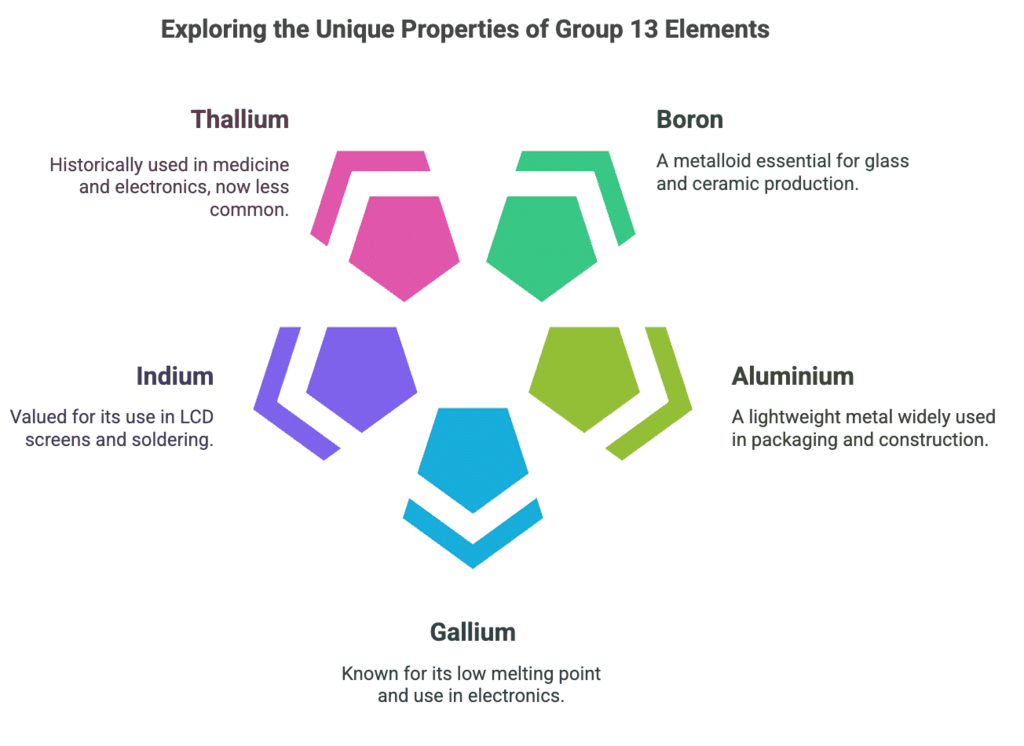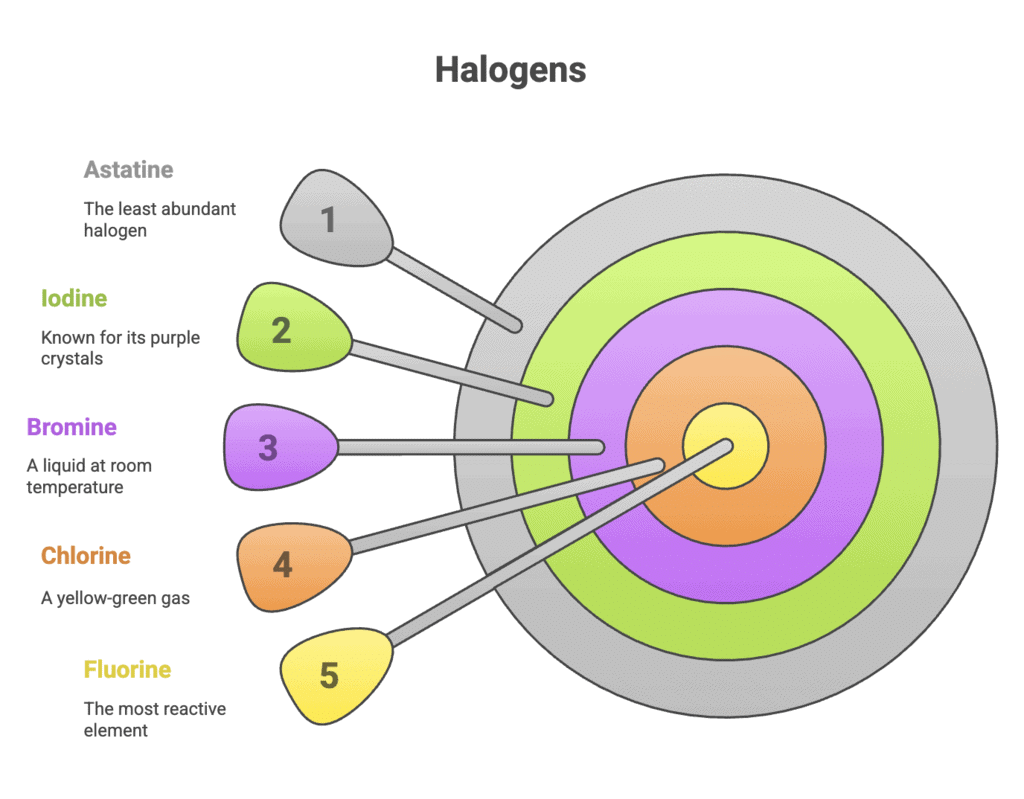Mnemonics: p-Block Elements | Chemistry Class 12 - NEET PDF Download
Elements of Group 13 (Boron Family)
Types: Boron, Aluminium, Gallium, Indium, Thallium
Mnemonic: "Bears Always Grab Inky Thorns"
Breakdown:
- Bears - Boron
- Always - Aluminium
- Grab - Gallium
- Inky - Indium
- Thorns - Thallium

Elements of Group 14 (Carbon Family)
Types: Carbon, Silicon, Germanium, Tin, Lead
Mnemonic: "Cats Silently Grab Tasty Leaves"
Breakdown:
- Cats - Carbon
- Silently - Silicon
- Grab - Germanium
- Tasty - Tin
- Leaves - Lead
Elements of Group 15 (Nitrogen Family)
Types: Nitrogen, Phosphorus, Arsenic, Antimony, Bismuth
Mnemonic: "Nervous Penguins Attack Angry Bears"
Breakdown:
- Nervous - Nitrogen
- Penguins - Phosphorus
- Attack - Arsenic
- Angry - Antimony
- Bears - Bismuth
Elements of Group 16 (Oxygen Family)
Types: Oxygen, Sulphur, Selenium, Tellurium, Polonium
Mnemonic: "Ostriches Sulk, Seeking Tasty Plums"
Breakdown:
- Ostriches - Oxygen
- Sulk - Sulphur
- Seeking - Selenium
- Tasty - Tellurium
- Plums - Polonium
Elements of Group 17 (Halogens)
Types: Fluorine, Chlorine, Bromine, Iodine, Astatine
Mnemonic: "Frogs Climb Briskly In Attics"
Breakdown:
- Frogs - Fluorine
- Climb - Chlorine
- Briskly - Bromine
- In - Iodine
- Attics - Astatine

Elements of Group 18 (Noble Gases)
Types: Helium, Neon, Argon, Krypton, Xenon, Radon
Mnemonic: "Happy Newts Always Keep Xtra Rations"
Breakdown:
- Happy - Helium
- Newts - Neon
- Always - Argon
- Keep - Krypton
- Xtra - Xenon
- Rations - Radon
Trends in p-Block Elements Properties
Types: Atomic Radius, Ionization Enthalpy, Electronegativity, Oxidation States
Mnemonic: "Apes Ignore Electric Oranges"
Breakdown:
- Apes - Atomic Radius
- Ignore - Ionization Enthalpy
- Electric - Electronegativity
- Oranges - Oxidation States
|
75 videos|338 docs|78 tests
|
FAQs on Mnemonics: p-Block Elements - Chemistry Class 12 - NEET
| 1. What are p-block elements and where are they located in the periodic table? |  |
| 2. How can mnemonics help in remembering the p-block elements for NEET? |  |
| 3. What are the common oxidation states of p-block elements? |  |
| 4. Why are p-block elements important in everyday life? |  |
| 5. What are some common compounds formed by p-block elements that are important for NEET preparation? |  |





















